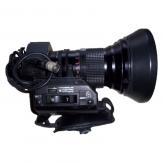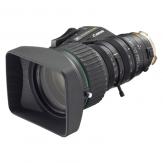- half shift
- 3 shift
- 14 shift
- 30 shift
Enter a value between 1 and 60

Professional Lenses
Here are professional lenses for television cameras.
Television optics are used for reporting, broadcasting and filming news. A lens is a lens system for projecting a picture onto a photosensitive element of a television camera.
Characteristics of television lenses:
- focal length
- relative hole
- depth of field
- mounting type (C, CS)
- format
Television and film lenses
Television lenses were developed for live reporting, when the material is written and broadcast live immediately, i.e. for television broadcasting. The focus of such lenses is adjusted manually by the viewfinder. Shooting has a great depth of field (DOF), and the screens on which the image is transmitted, as a rule, low resolution.
The defining parameters of TV lenses are convenience, cost, weight and size. In standard telephoto lenses, especially at a wide angle, there is a geometric distortion - “barrel” or “pincushion”.











